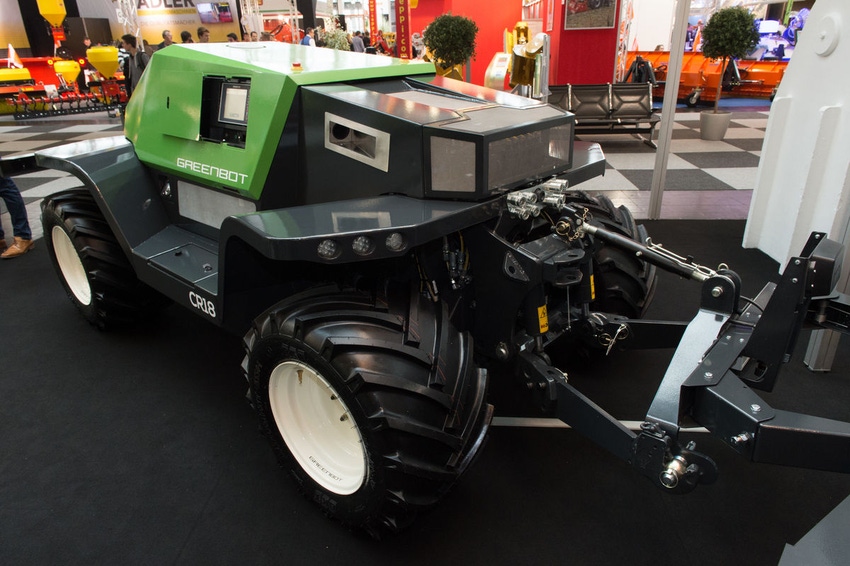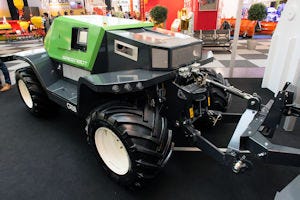July 14, 2016

Getting into the country to talk to forward-thinking farmers is a lot of fun for me - as it should be. Those that are embracing technology in their own ways to advance their operations are exciting to talk with. And a recent farm trip brought up a discussion of automated equipment - specifically follow-on tools to maximize a single person's productivity.
The idea of a second machine mirroring the first, or one machine with no driver starting on one end of the field while the other machine with driver starts the opposite end is a dream for some. Boosting productivity with a single person running two combines, for example, is interesting stuff. Oh, it'll take some time to gear up, but autonomous vehicle research continues to advance.
And that brought up an interesting thought: will ag robots be elephants or spiders? Both approaches have merit depending on what they're to do.

With no need for an operator, this tractor doesn't have to carry the weight of a cab and other systems.
Of course a "combine robot" should be big to capture hundreds of bushels of grain - with no cab for an operator and perhaps only a smaller controller you'd have more room for a bigger grain tank. This is the elephant idea, where bigger automated machines would replace more traditional machines, whether totally autonomous or with some kind of semi-mirrored operation between two machines.
The robot tractor I encountered at Agritechnica (see the photo on this page) is another example. No need for an operator station, and the machine has enough power to run a hay rake or small cultivator starting at one end of a field while you work in another, automatically working away. Or you could just drop it off, fire it up and let it do a whole field on its own, while you go on your way.
But the discussion about big versus small can change when you talk weed control. Here's where bigger may not be the choice, but we're by no means putting down attempts at full size machines. Yet another machine I saw last fall at Agritechnica offered up the idea of smaller machines roaming your fields doing specific tasks. To the bigger "elephants" of the field, these would be the spiders.
The spiders could visually distinguish between a weed and a crop plant and kill the weed, moving on to the next for annihilation. We get hung up on the idea of an operator position in a machine, which increases the size, but deploying unmanned ground vehicles that can tell a palmer amaranth from a soybean plant - even at the most effective small weed size - and take it out early, would be a good thing.
We featured an unmanned ground vehicle earlier in New Product Monday and this is designed for security and some other tasks, but that's just a start. Leica Geosystems is involved with that. The science continues to progress.
You'd have to get your head around the idea of a dozen little mechanical weed killing Droids* running or rolling around your farm. Yet it would be efficient. Consider them a weed-killing Roomba that heads out each day when the light is right for those optical sensors and return later to charge. They might go out four or five times a day, and with multiple machines they could do the job you may remember doing as a kid - taking out weeds.
All this sounds kind of far-fetched, but with labor costs rising, and available labor falling, this may be reality sooner than you think. Already researchers are hard at work on visual systems that can tell a weed from a plant (even in the row), and with the price of computer processing power falling faster every year, breakthroughs here could be imminent.
You'll just have to decide the best tool for the job - elephant or spider. When these show up in the market, the choice will probably be pretty clear. Stay tuned.
*Editor's note: Droid is a registered trademark of Lucasfilm Ltd. - we always find that funny when the word Droid is used by a product and the small print includes that trademark information.
You May Also Like




